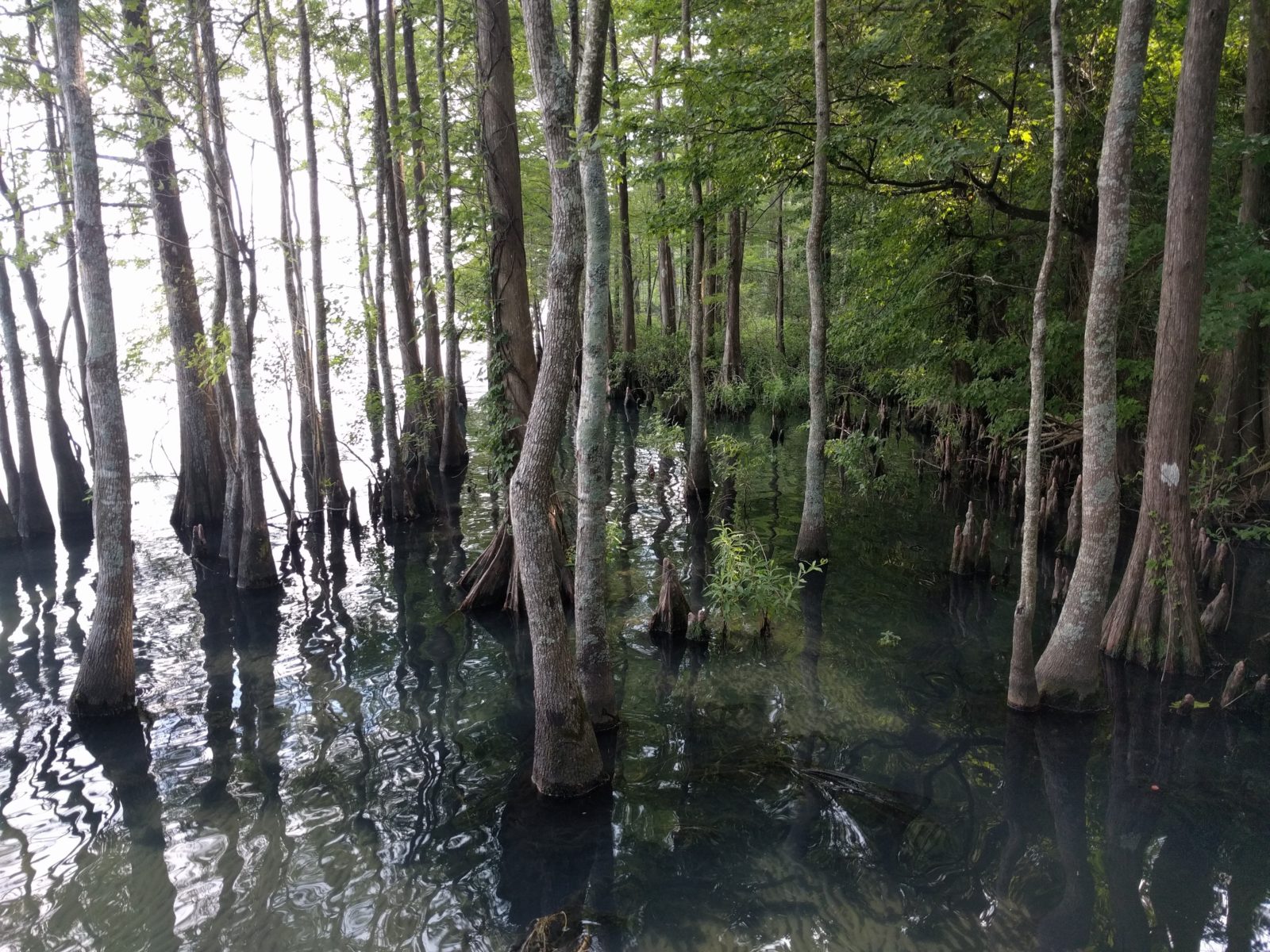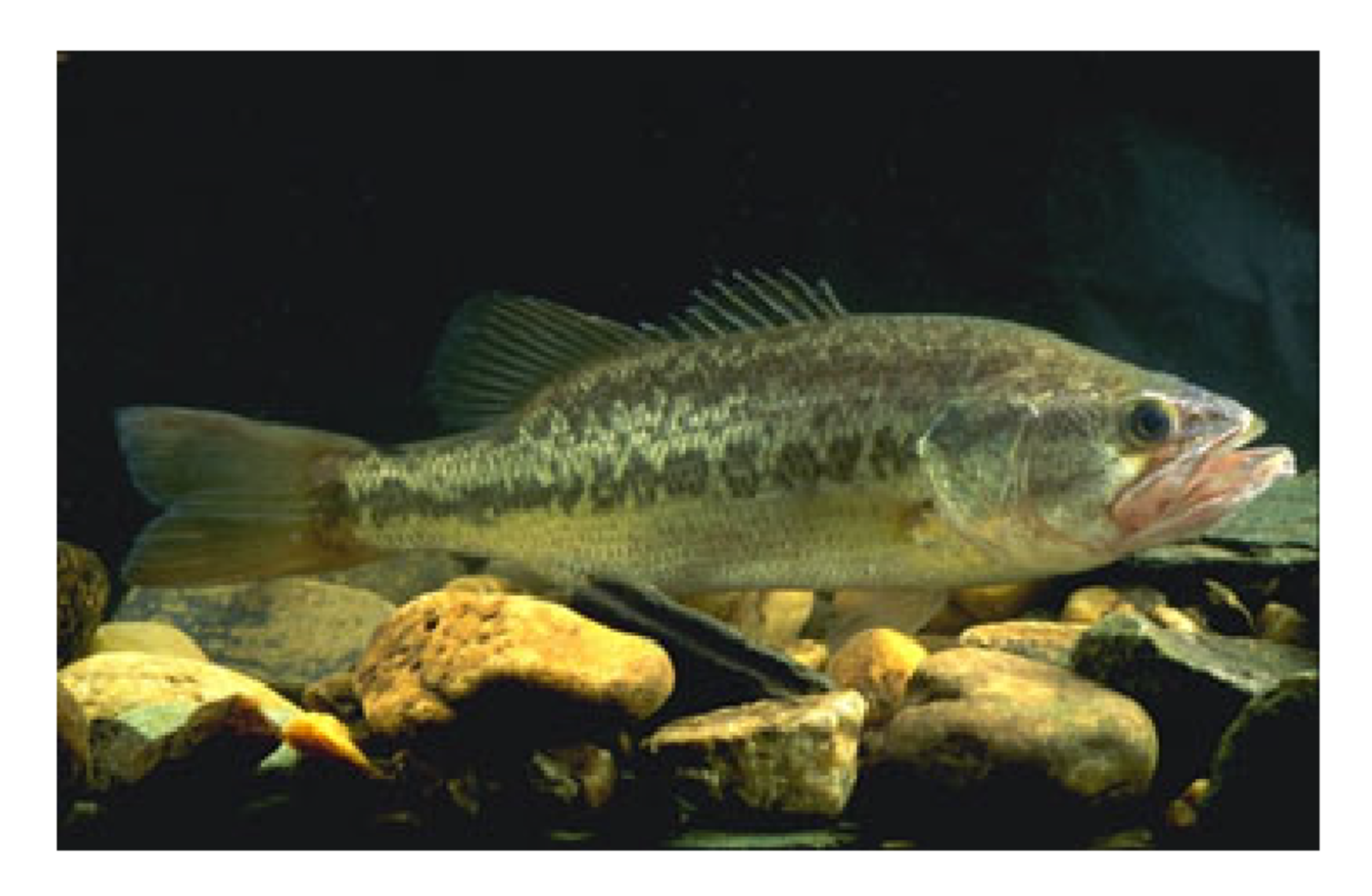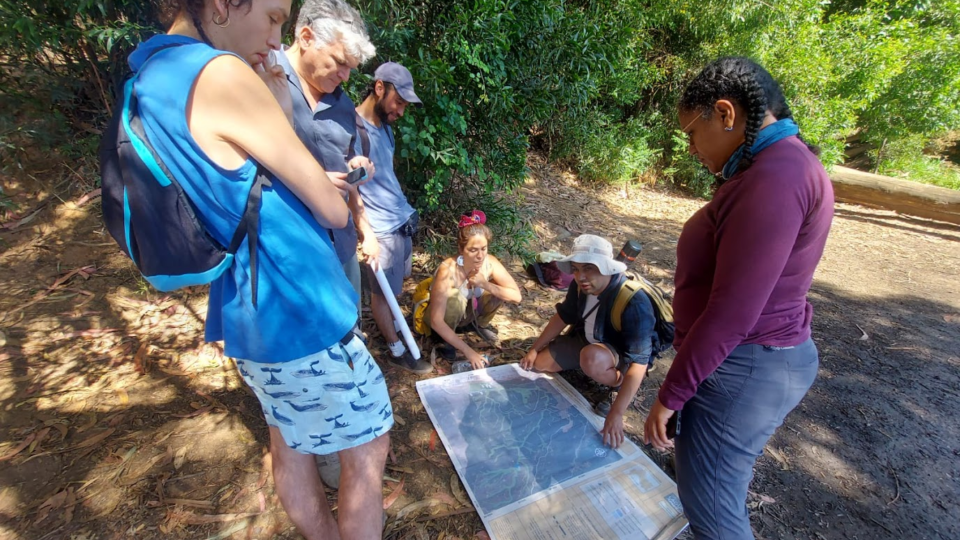Why Are Lake Levels Important for Wildlife?
 Lake levels influence the amount of high quality shoreline habitat available for fish.
Lake levels influence the amount of high quality shoreline habitat available for fish.
We spoke with Kevin Dockendorf of the NC Wildlife Resources Commission (NCWRC) to learn more about these relationships. Kevin is the Coastal Fisheries Research Coordinator for the Inland Fisheries Division and provides regional support to the fisheries biologists of the NCWRC in addressing research and survey needs to learn about the resident sportfish and freshwater fish populations of the region. This research is then used to advance management goals and objectives to ensure healthy and sustainable fisheries and aquatic communities.
Dockendorf explained that lake levels are important to fisheries, aquatic resources, and aquatic communities because water quantity likely influences the amount of shoreline habitat available for fish, which is critical for maintaining fish populations. Lake level fluctuations can be caused by several factors, including natural events such as flooding or drought. High water levels prevent adequate drainage of surrounding lands, which negatively impacts personal well-being and economics of the area. Dockendorf explained that he has seen these negative impacts of flooding on properties adjacent to lakes in recent years near Lake Mattamuskeet and Lake Phelps in Eastern North Carolina. Fluctuations can also be caused by human actions, such as pumping, or related to the levels of surrounding water tables.
Fishing plays a significant role in the economy and it is critical to keep resident sportfish populations strong to ensure the continuity of the sport. Changes in water quality and quantity due to variations in conditions of the immediate area can be helpful in identifying potential reasons for a strong or weak year-class, which is defined as all of the fish of a species born in the same year. Year-class strength is important to fish populations and can be utilized as a predictor tool for future angling opportunities.
Water quality and water quantity are two critical aspects of a healthy relationship between society and the natural resources associated with aquatic environments, Dockendorf emphasized. He believes that all native fish and aquatic species are vital to the health of the communities where they’re found, and that any disruption to a species is likely to have an effect on the health of the overall ecosystem. For example, water levels that are too high may negatively affect terrestrial flora and fauna populations because high water may inundate surrounding lands and influence recruitment of tree saplings or ground nesting animals. When this water recedes, organic matter may flow back into the lake with it. The breakdown of this organic matter removes oxygen from the water, which may create conditions for fish kills. Within his 25 year fisheries career, he has been a primary witness to the changing fish populations caused by deviations in water quality and quantity. His research has seen communities that recover alongside others that do not. He did, however, comment on the impressive relative resiliency of aquatic communities in response to these types of situations, like hurricane-induced fish kills.
 Largemouth Bass
Largemouth Bass
Dockendorf highlighted the aquatic environment of Lake Phelps, the second largest lake on the coastal plain, where lake levels have historically played a role in fish populations. In 1985, a study was conducted in Lake Phelps on the utilization of a fish ladder, which is a structure that enables fish to pass through obstacles. However, extreme drought conditions at the time caused Lake Phelps to be at a near record low level, impacting the water flow through the fish ladder and ultimately affecting fish migration. In 2015, Lake Phelps experienced high water levels that allowed Gizzard Shad to enter the lake, a species that had not been sampled in the lake prior to the high water opportunity.
These two examples demonstrate how the Lake Phelps fish community is highly influenced by water levels because the shoreline habitat is the extent of the available habitat diversity. It is home to several species including Largemouth Bass, Yellow Perch, and Pumpkinseed. Lake Phelps has consistently offered high quality angling for these game fish species, but is reliant on optimal water levels to ensure the survival and flourishing of each species. For example, Largemouth Bass prefer an aquatic habitat with structure, such as submerged vegetation. Water levels that fall below the normal range likely force bass and other fish into less than optimal habitats, such as near shore areas without submerged vegetation. Thus, the available spawning habitat is limited for spawning beds and fish reproduction and recruitment. This could potentially make survival more difficult, resulting in a decrease in population.
Managing and understanding lake levels is critical to preserving lakes and protecting wildlife. The protection of wildlife is vital to the health of the ecosystem because aquatic communities are deeply interconnected and one changing aspect can have a domino effect on other features of the environment. Fluctuations can impact game fish species and affect angling, so understanding lake levels is also vital to the health of the economy.
A special thank you goes to Kevin Dockendorf, Coastal Fisheries Research Coordinator for the Inland Fisheries Division, for contributing his knowledge to this piece.
The Federal Aid in Sport Fish Restoration is a primary source of funding for Inland Fisheries Division Projects. For more information, click here.
This is the second in a series of posts that explores why it is important to study lake water storage. Other posts in this series include:
LOCSS News
We share stories about the lakes in our study, our partners and volunteer citizen scientists, as well as interesting results from our research.





